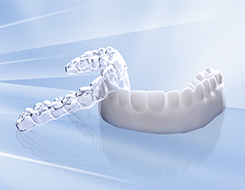What our orthodontics team do for a best treatment plan
1. candidates age and growth: Consider the candidates growth pattern and development stage before designing the treatment plan. Ideally, start treatment during the period of active growth for better results.
2. Attention: Monitor the candidates growth and development throughout the treatment to make necessary adjustments.
3. Malocclusion severity: Assess the severity of the malocclusion, including crowding, spacing, overbite, and overjet.
4. Attention: Customize the treatment to the extent of the problem and consider using additional appliances to achieve desired results.
5. Skeletal discrepancies: Evaluate any underlying skeletal issues and their influence on the candidates occlusion and facial aesthetics.
6. Attention: In severe cases, consider referring the candidate for orthognathic surgery before starting orthodontic treatment.
7. Dental health: Check the candidates dental health, including periodontal and endodontic status, as well as any cavities or dental wear.
8. Attention: Collaborate with other dental specialists to ensure that the patient receives adequate dental health treatment before starting orthodontic treatment.
9. Aesthetics: Consider the candidates preferences and aesthetic concerns, such as smile line and facial harmony.
10. Attention: Communicate with the candidate to ensure that their concerns are addressed and included in the treatment objectives.
11. Medical and dental history: Review the candidates medical and dental history for any contraindications or potential complications during orthodontic treatment.
12. Attention: Modify the treatment plan if necessary and discuss any potential complications with the candidate.
13. Treatment duration and compliance: Determine the estimated treatment duration and the candidates level of compliance.
14. Attention: Discuss the importance of compliance with the candidate and provide them with a realistic timeline for treatment.
15. Financial considerations: Evaluate the cost of the treatment and discuss with the candidate their financial constraints or preferences.
16. Attention: Present treatment options that fit within the candidates budget but also achieve the best possible results.
17. Retention: Develop a retention plan to maintain the new position of the teeth after the completion of the orthodontic treatment.
18. Attention: Educate the patient on the importance of retention and teach them how to use and maintain their retainers.
19. Emergency contingencies: Prepare a plan for dealing with possible emergencies, such as broken appliances or injuries related to orthodontic treatment.
20. Attention: Ensure that the candidate knows how to handle emergencies and what steps to take if they occur.
-
1
How do we make good quality of Clear Aligner during the manufacture and designing the treatment plan
Jun 15,2023
-
2
Digital technology trend in clear invisible orthodontics
Jun 14,2023
-
3
What our orthodontics team do for a best treatment plan
Jun 12,2023
-
4
The advantage of Invisible orthodontics and clear aligner
Jun 12,2023
-
5
Different age groups in clear aligner treatment plan
Jun 21,2023
-
6
Invisible orthodontics market scale and trend in following 10 years
Jun 15,2023
Customization Service
RFG REQUEST
FOR QUOTATION
Global Sourcing Marketplace
-
282100+
RFQ
-
<23h
Avg Quotation Duration
-
175000+
Active Suppliers
-
6039
Industries
One Request, Multiple Quotes
"Outd doorP65 waterproofhigh lumen led reflector 30w 50w 100w linear led flood light" from D***** received 6 quotation(s)

















